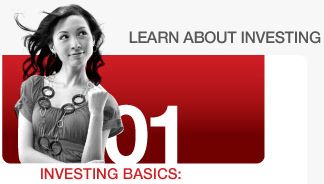This article is reproduced from the Bursa Pursuit website. It’ll be useful if you intend to take part in their Challenge Game which runs from 1 Oct 2007 until 30 Nov 2007.

Reading Market Reports
As a stock trader, you will begin to pay more interest to the business section of your local newspaper. Most feature a section that deals with Stock Market prices at close of the previous day. In this section, you will come across the following descriptions:
| Year’s High | - the highest price for a particular stock for the year. |
| Year’s Low | - the lowest price for a particular stock for the year. |
| Stock Code | - a unique numbering system to identify a particular stock. |
| Stock Counter | - the stocks listed on Bursa Malaysia. |
| Cls’ng (Closing) | - the closing price for a particular stock for that particular trading day. |
| +/- | - the symbol for the increase or decrease in the stock price for that particular day. |
| +/-% | - the symbol for the percentage increase or decrease in the stock price. |
| Lots Traded | - stocks are normally traded in board lots of 100 units; lots traded will tell you the number of lots traded on a particular day. |
| Day’s High | - the highest price for a stock in that trading day. |
| Day’s Low | - the lowest price for a stock in that particular day. |
| Div Yield | - a dividend yield is a method of valuing stocks; it is calculated asCash Dividend per Stock = Dividend Yield Market Stock Price |
| P/E Ratio(Price/Earnings Ratio) | - the information obtained from this will enable you to make a performance comparison of a company with that of the industry, and from one period to another. The formula is:Current Market Price = P/E Ratio Earnings Per Stock |
| Earning per stock | - amount of a company’s earnings attributable to each ordinary stock of that company. |
| M Cap(Market Capitalisation) | - this shows the total value of a listed company’s stocks based on the current market price; calculated as:Stock’s Market Price x Number of Stocks Issued |
| NTA per Stock | - this indicates the value of assets backing the stock of a company; calculated by: Net assets of a company Number of ordinary stocks in it |
Learn about Investing content courtesy of IntegraStock, the creators of a proprietary trading software for successful trading.

